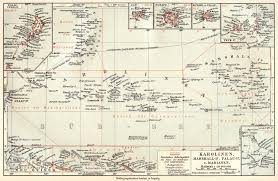Exploring the Wonders of Palau: A Tropical Paradise

Introduction to Palau
Palau, an archipelago of over 500 islands located in the western Pacific Ocean, has gained recognition as a premier travel destination due to its vibrant marine life, stunning landscapes, and rich cultural heritage. As eco-tourism becomes increasingly important, Palau stands at the forefront, emphasizing conservation and sustainable practices that protect its natural beauty. The significance of Palau lies not only in its breathtaking environment, but also in its commitment to preserving its unique ecosystems, making it a vital topic for travelers and conservationists alike.
Tourism and Natural Attractions
The tourism sector in Palau has witnessed a remarkable recovery post-COVID-19, with visitors returning to explore its world-famous dive sites, including the Blue Hole and Jellyfish Lake. The striking coral reefs, which house a myriad of species, have positioned Palau as a top destination for scuba diving and snorkeling enthusiasts. In 2022 alone, Palau saw an influx of over 30,000 international tourists, a significant increase compared to the previous years impacted by the pandemic.
Palau is also known for its geological formations, such as the Rock Islands, a UNESCO World Heritage site. These limestone islands are not only picturesque but also provide habitats for unique flora and fauna. Efforts to preserve these natural wonders include the establishment of the Palau National Marine Sanctuary, which protects 500,000 square kilometers of oceanic waters from fishing, enhancing biodiversity and ensuring the sustainability of marine resources.
Cultural Significance
Beyond its natural wonders, Palau boasts a rich cultural history reflective of its indigenous peoples. The population of around 18,000 individuals includes various ethnic groups, each contributing to the nation’s unique cultural landscape. Traditional customs, crafts, and the Palauan language are integral to daily life. Events such as the Belau National Museum’s exhibitions and cultural festivals promote local art and history, fostering a sense of pride among residents and interest among visitors.
Conclusion
Palau’s stunning beauty and cultural diversity make it a significant destination for eco-tourism and a model for sustainable practices. As global awareness of environmental issues rises, travelers are increasingly looking for locations that prioritize conservation, which gives Palau a competitive edge in the tourism market. Observers predict that with continued commitment to its natural and cultural preservation, Palau will not only thrive as a tourist destination but also act as a global leader in sustainability efforts. For both travelers seeking adventure and environmental advocates, Palau remains a jewel of the Pacific, a must-visit for anyone looking to experience nature and culture at its finest.








